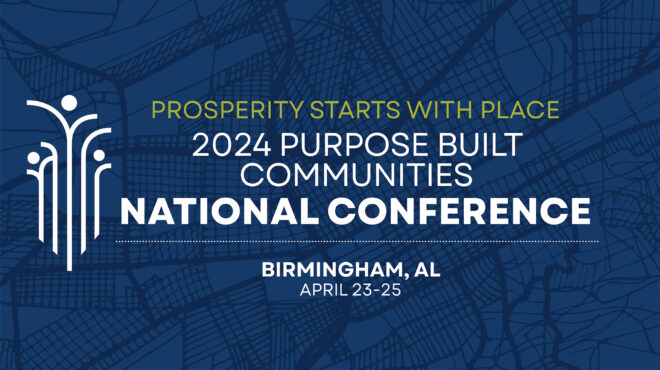Those of us who are in the business of creating healthier neighborhoods know that it requires a comprehensive approach. The Build Healthy Places Network (BHPN) convened several organizations around the country, including Purpose Built Communities, to create its “Principles for Building Healthy and Prosperous Communities” this month.
The five principles outlined in the report provide a framework to think about the intersection of community development and health and best practices for how to work across sectors to achieve a future of equity and opportunity:
- Principle 1: Collaborate with the community – “Through an inclusive and fair process, community members should inform and share in ownership of the work.”
- Principle 2: Embed equity – “Integrating equity into policy, funding, and programs will help narrow these gaps, whether in rural, suburban, or urban communities.”
- Principle 3: Mobilize across sectors – “To be successful, work must intentionally engage multiple sectors to improve the health and wellbeing of individuals, families, and communities.”
- Principle 4: Increase prosperity to improve health – “True transformation mandates systems-level interventions, policy changes, and multi-sector investments that aim to break the cycle of poverty and poor health for children and families.”
- Principle 5: Commit over the long term – “Poverty and poor health are enduring problems, requiring a long-term commitment among funders, stakeholders, community members, government, and business.”
“These principles connect the threads that we see throughout our network,” said Carol Naughton, president of Purpose Built Communities and member of the BHPN National Advisory Board. She was part of the working group that developed the principles and considers them to be “aspirational and consistent with Purpose Built Communities’ goals of equity and opportunity for all.” Othello Meadows, president and CEO of Network Member Seventy Five North in Omaha, NE is also a member of the BHPN National Advisory Board and contributed to the working group.
For more information on the principles and how they were developed, visit Build Healthy Places Networks’ website.









